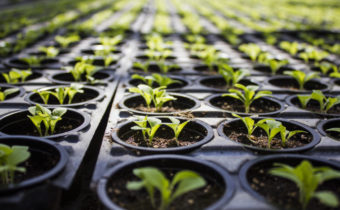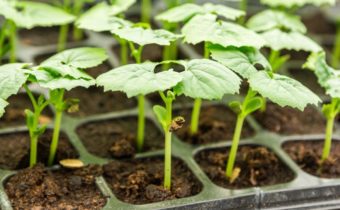Secrets of the correct pruning of grapes
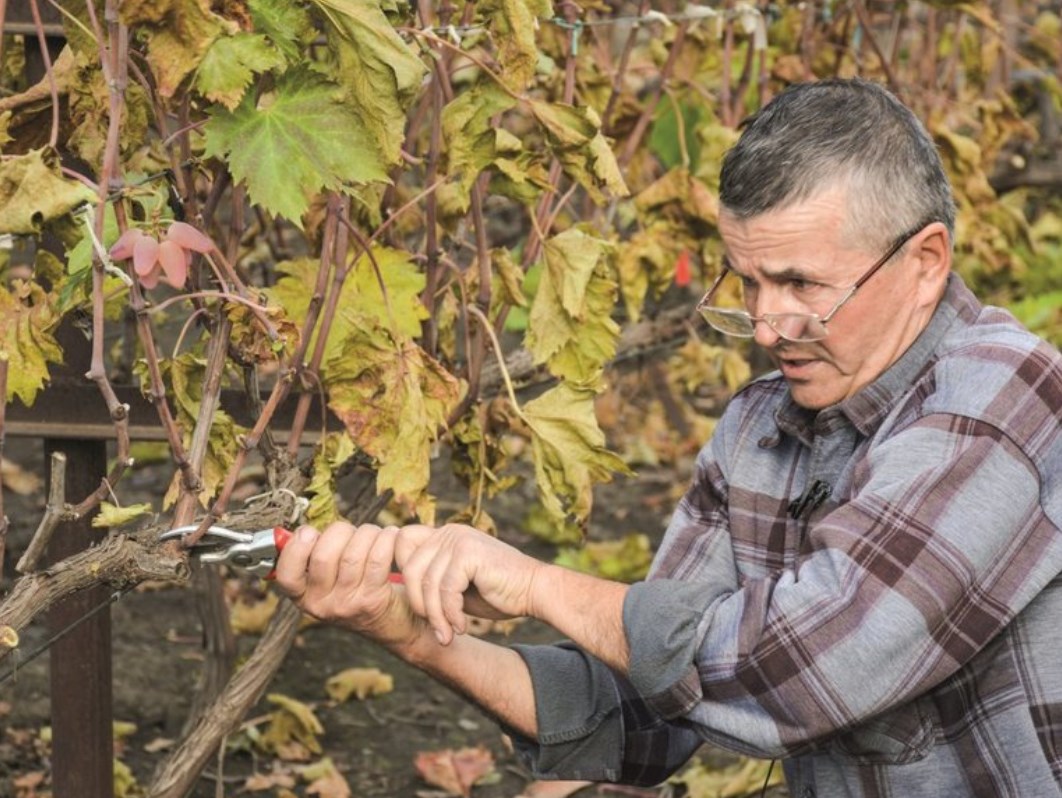
In order for the vine to grow well and produce a rich harvest, it needs proper pruning. Without this procedure, the plant forms too many ovaries that are not able to provide good nutrition. Therefore, every year the branches are getting longer. At the same time the sizes of berries decrease, and tastes worsen. Pruning is carried out every year in spring and autumn.
The need for pruning
The peculiarity of the grapes is that its shoots are formed and grow constantly. As a result, their uneven and indiscriminate growth of buds, forming clusters, are formed weak and rare. Therefore, there are few inflorescences, and the berries are small and tasteless. Nutrients from grapes are sent first to the upper developing branches. If there are a lot of them, the plant is not able to provide everything with proper nutrition. Therefore, the vines do not have the strength to bear fruit.
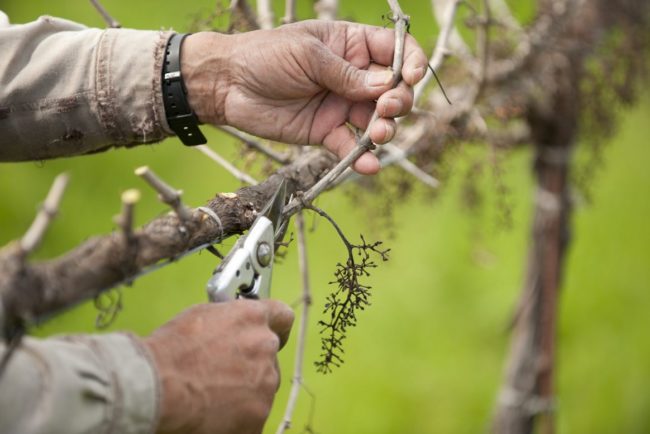 After cutting off the extra branches, only the strongest shoots remain on the vine. All broken, undeveloped branches are removed. Therefore, the plant gives a good harvest. Berries grow large and sweet.
After cutting off the extra branches, only the strongest shoots remain on the vine. All broken, undeveloped branches are removed. Therefore, the plant gives a good harvest. Berries grow large and sweet.
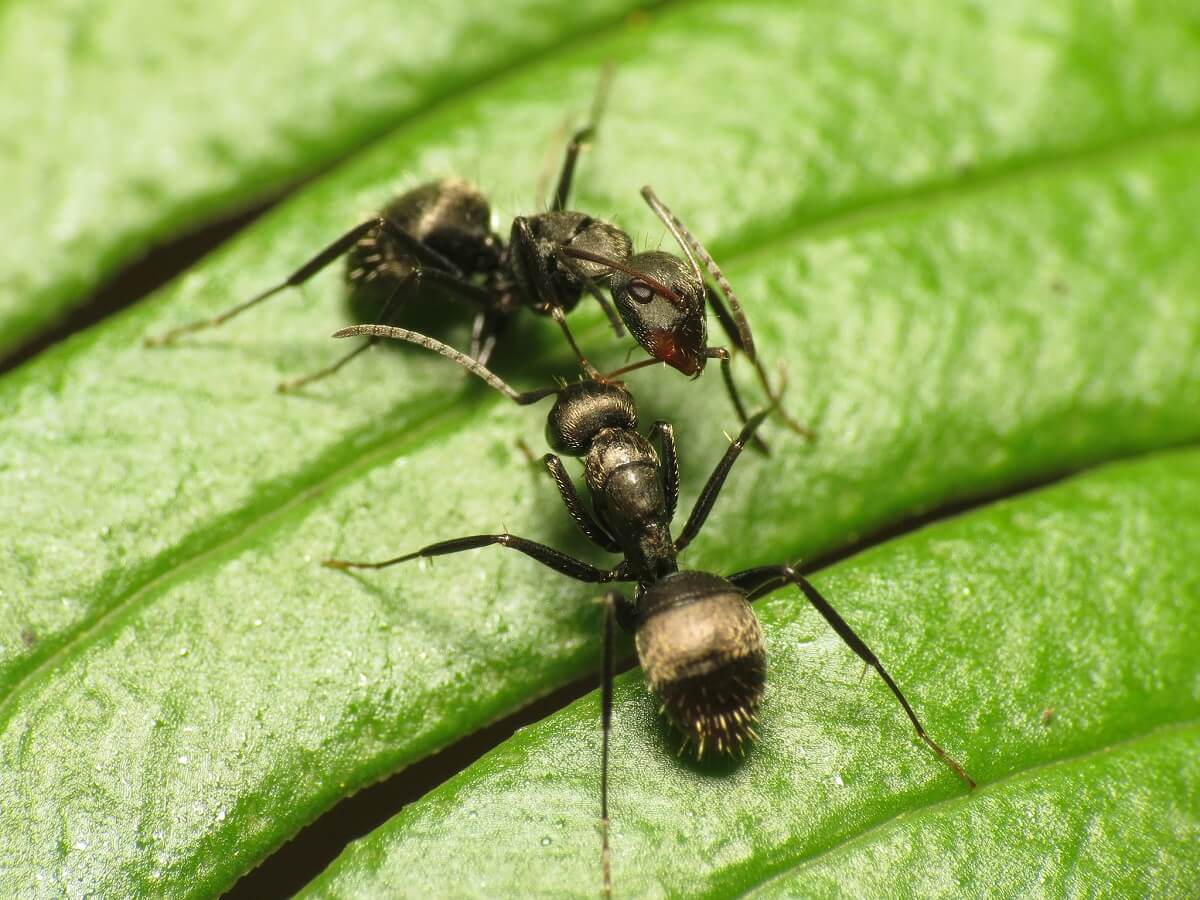
With the right procedure, it is possible to achieve the following goals:
- remove damaged, diseased and frozen branches;
- form the right bush;
- increase the amount of the crop;
- get higher taste characteristics;
- retain signs of variety.
Trimming time
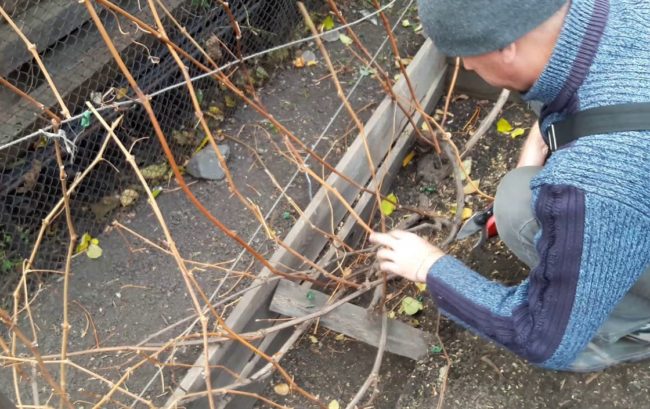 The procedure for removing unnecessary branches is carried out from the first year of plant growth. At the same time young bushes are pruned for the purpose of proper formation. For an adult vine, which is already bearing fruits, pruning is carried out to improve the taste of berries. Branches are cut from old bushes to prolong the period of fruiting of the plant.
The procedure for removing unnecessary branches is carried out from the first year of plant growth. At the same time young bushes are pruned for the purpose of proper formation. For an adult vine, which is already bearing fruits, pruning is carried out to improve the taste of berries. Branches are cut from old bushes to prolong the period of fruiting of the plant.
The timing of the procedure is determined by the varietal characteristics of the vine. Climate conditions and weather conditions in the growing region affect the time of pruning:
- In the fall, the plant is pruned in October, until the first frost comes. In this case, only green branches are removed, which did not have time to ripen until autumn. Brown elastic branches do not touch.
- A few days after the preparatory pruning, the main procedure is carried out. The best time for it - after the onset of the first frost. In this case, weak and thin branches are removed. The remaining strengths are simply shortened.
In the spring, branches are removed only if the procedure was not carried out in the autumn. It is better to do this before the start of sap flow, but after the retreat of the most severe frosts. At this time, the vine easier to care for. The risk of infection in the wound is minimal.
Pruning to form a bush
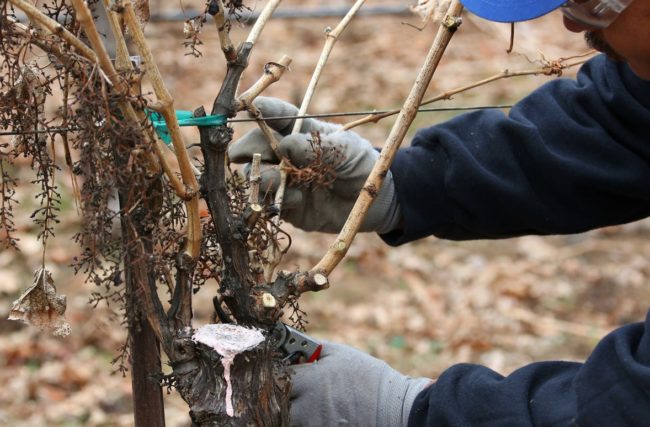 All work is carried out with a sharply pointed tool. You can check the quality of sharpening on a sheet of paper. If the sector does not chew it, the tool can work. Secateurs, saws and knives must be disinfected. For this, the cutting edges are rubbed with an alcohol solution. The perfect cut is smooth, without chipping, cracked fibers or cracks.
All work is carried out with a sharply pointed tool. You can check the quality of sharpening on a sheet of paper. If the sector does not chew it, the tool can work. Secateurs, saws and knives must be disinfected. For this, the cutting edges are rubbed with an alcohol solution. The perfect cut is smooth, without chipping, cracked fibers or cracks.
Dumb and dirty tools can not cut the vine. A wounded infection can kill or weaken the entire plant.
To form a shrub, first get rid of all damaged branches. Broken and diseased shoots are subject to removal. It does not take into account the selected trimming scheme. Then shorten healthy branches, leaving no more than 12 eyes on each. Too long shoots weaken the plant.

Especially carefully work with branches that have already begun fruiting in the current year. When pruning them try not to damage the base. The length of the one-year branch should not exceed 70 cm. The shoots are trying to keep, with a minimum distance from the trunk.
The diameter of the remaining shoots must be at least 5 mm. Too thin branches cut off. Also get rid of thick branches, the diameter of which exceeds 1 cm.
The formation of grapes depending on the age of the vine
For newly planted young plants, during spring pruning, the upper part of the main shoot is cut, leaving 2 buds below. They will give rise to two, growing in opposite directions, sprouts. In autumn, when the leaves fall, on one of them leave 2 buds, and on the other 4 buds. In late autumn, the vine is removed and covered.
With the onset of spring, the shelter is removed. Vine tie up to the trellis, directing shoots in opposite directions. The branches growing during the summer from the main shoots are directed vertically upwards or with a small inclination. In autumn, 2 branches are left on the long sleeve, aligning the length of the sleeves.
Then shorten the branches that grew vertically. On the ones located closer to the central part of the bush, 2 buds are left. They will become knots of substitution. On the rest leave 4 buds. The following year, they will form grapes.
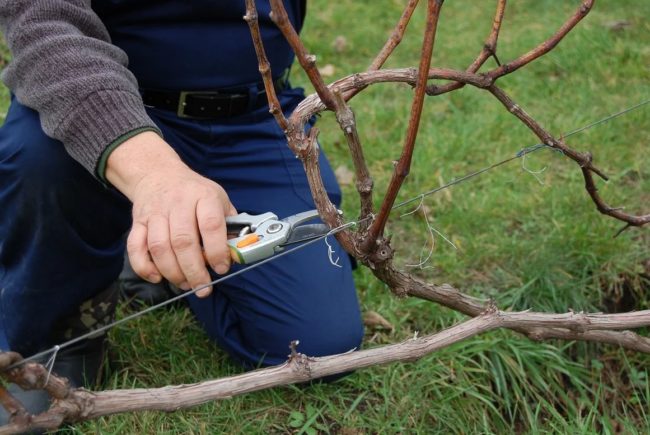 In the third and subsequent years in spring, they tie up long fruit branches horizontally to the crossbar of the trellis. The tops are directed in opposite directions. Replacement knots are left to grow upwards. In the summer of all the buds appear shoots. In August, the stems are shortened by 20 cm. This will increase the yield and improve the quality of the berries.
In the third and subsequent years in spring, they tie up long fruit branches horizontally to the crossbar of the trellis. The tops are directed in opposite directions. Replacement knots are left to grow upwards. In the summer of all the buds appear shoots. In August, the stems are shortened by 20 cm. This will increase the yield and improve the quality of the berries.
In the process of autumn pruning, seed-bearing branches along the edges are cut together with part of the sleeve. Then on each side there will be one main runaway with two vertical branches. They are cut according to the scheme of the previous year. Shoots closer to the center, pruned to 2 buds. On the far left 4 buds.
If the winter in the growing region is cold, you can leave more buds. Moreover, their number should not be more than 10.
Major mistakes
Many inexperienced gardeners feel sorry for cutting branches too hard. They cut only the tops. This leads to thickening of the vine, a decrease in the amount of light and a lack of nutrients. As a result, the plant slows down the growth, the berries become smaller and sour.
Another mistake is to remove only the thick or thin and weak shoots. Correctly cut only the branches and thin, thickening shoots. After pruning, a bush should remain with two main branches and annual shoots grown on them.
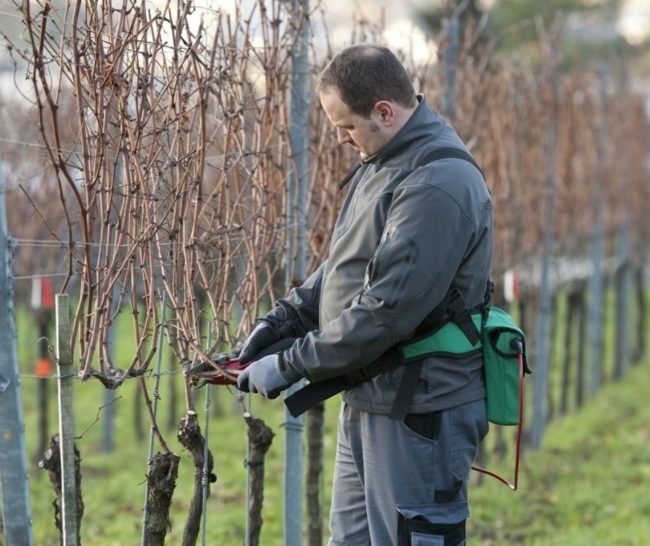 Hemp after pruning is not left on the annual branches. It provokes the formation of rot. It is permissible to leave a small stump when removing an old and thick branch.
Hemp after pruning is not left on the annual branches. It provokes the formation of rot. It is permissible to leave a small stump when removing an old and thick branch.
Second-order shoots that develop from the leaf axils from annual buds should not be left on the bush. They increase the density and take resources for their development. They are allowed to grow to 2 leaves and pinch the tip.
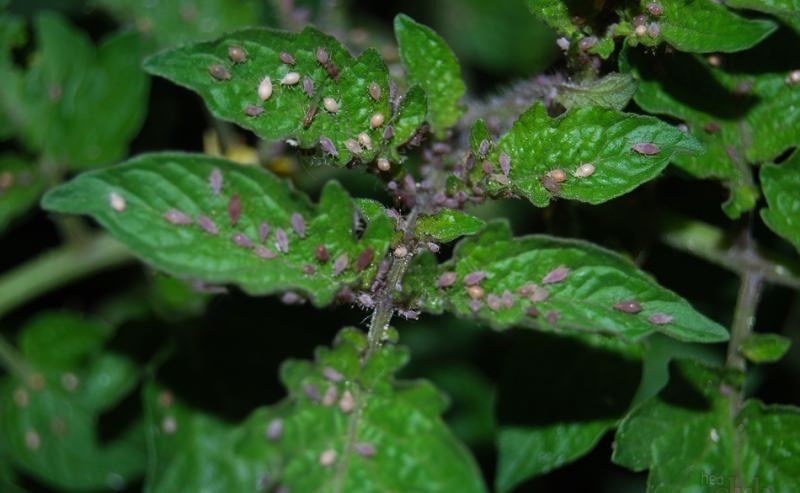
Finally
Pruning grapes is very important for a good harvest. When it is carried out, the recommended dates are observed.The remaining garbage must be burned in order not to provoke plant diseases. With all the recommendations, it is possible to perform the procedure even with minimal experience. Then the next year the vine will grow well and will give a lot of delicious berries.


